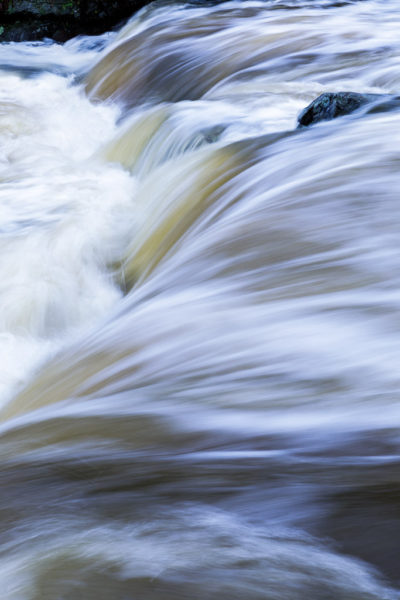After all of the rain we’ve had over the last several days, I decided to take a trip to Petit Jean State Park to photograph some of the park’s waterfalls. My first stop was the waterfall at the Lake Bailey dam. The waterfall is created by the overflow of Lake Bailey into Roosevelt Lake and is dependent on Lake Bailey’s water level. During dry periods, the water level drops, and the waterfall tends to dry up. That was certainly not the situation on this trip. Getting out of my truck, I could hear the roar of the waterfall from 150 yards away. Approaching the dam, the volume of water pouring over the dam was absolutely incredible. The flow and turbulence of the water is something one would expect to see floating the rapids of the Colorado River.
I wanted to create an image that captured both the raw power of water and the beauty and serenity of the waterfall. I had to move very carefully to avoid slipping on the wet rocks as I positioned my tripod in a location where I could photograph the water as it flowed over the final cascade into Roosevelt Lake.
Typically, I shoot waterfalls with shutter speeds of ½ second or slower. I had arrived a little later than I normally would, so the lighting did not allow me to use a shutter speed that slow. To compensate, I selected the smallest aperture on my lens. This gave me sufficient depth of field throughout the image and allowed me to use the slowest shutter speed possible. To slow my shutter speed a little more, I attached a polarizing filter to the front of the lens. The filter had the additional benefit of removing the glare from the surface of the water.
Once home, I opened the file in Lightroom. I made a few minor tweaks to exposure, contrast, and a few other areas. I also reduced the image’s color temperature to remove some of the warmer orange and yellow tones in the image. This adjustment had the most significant effect on the final image.
Settings: 70mm, 1/10 sec, f/22

Pingback: 2018 Year in Review | Bob Henry Photography